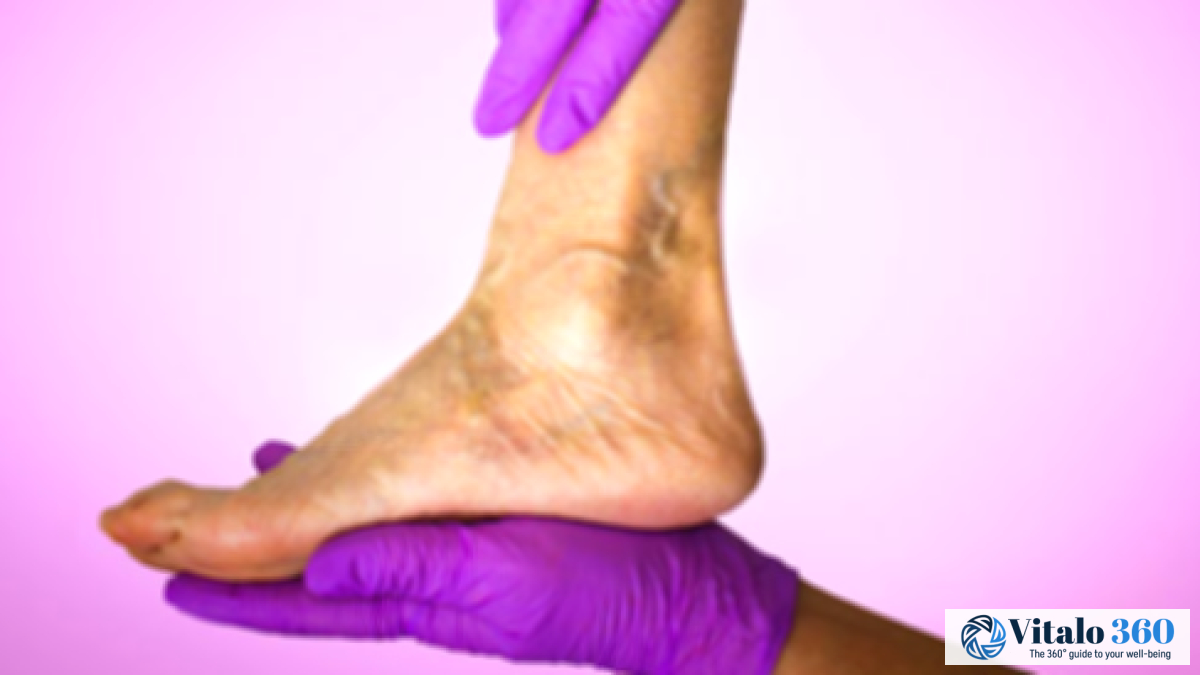Lower leg pain can result from muscle strain, shin splints, varicose veins, or even blood clots. This article explores common causes of lower leg discomfort and provides tips for relief, including home remedies and when to seek professional help.
Leg pain, huh? It’s something most of us probably deal with at some point, and it can really throw a wrench in your day. Ever felt that nagging ache after a long walk or an intense workout? We understand.
So, we’re gonna break down some common reasons why your lower legs might be screaming, and we’ll also look at some ways to find relief. We’ll be covering a fair bit, so here’s a sneak peek:
Let’s jump in!
Causes of Lower Leg Pain
Here’s a look at some of the usual suspects behind lower leg discomfort:
1. Muscle Strain
One of the most likely culprits is a good old muscle strain. This usually pops up after you push yourself a bit too hard, whether it’s during a workout or just going about your day, um, yeah it can happen anytime. It’s basically a small tear in the muscle fibers, usually felt in the back of your lower leg. These strains often happen because you’re overdoing it.
Yep, muscle strain, it’s pretty common, especially if you’re hitting the gym hard, playing sports, or suddenly increasing your activity level. Sometimes, it’s just bad luck, but it can also be linked to underlying conditions like diabetes.
2. Shin Splints
Shin splints are pretty darn painful. It’s a condition characterized by discomfort in the front part of your lower leg. The muscles around your shinbone get inflamed from impact, making the front of your leg feel sore, tender, and generally not happy.
There are a few reasons why this might happen, such as:
- Doing repetitive activities, especially running, on hard surfaces or uneven ground.
- Wearing unsupportive shoes or shoes that have seen better days.
- Using improper technique or ramping up your training too quickly.
3. Varicose Veins
One of the more common reasons for lower leg pain is varicose veins. These are those bulging veins you sometimes see behind the calf. They happen when the valves in your veins weaken, leading to blood pooling and enlargement.
Varicose veins can show up because of standing for long stretches, which, as we know can cause the area to hurt especially following exercise or weight gain.
4. Fractures or Stress Fractures
Breaking a bone is a pretty obvious reason for lower leg pain, especially if you’ve had a recent injury. Stress fractures, on the other hand, are tiny cracks that develop over time, typically from repetitive stress, like running or jumping.
5. Blood Clots
Sometimes, without realizing it, blood clots can form. These can be quite serious, and, yes, they can cause leg pain.
A few things can make you more likely to get a blood clot, including:
- Being overweight or obese, especially with prolonged sitting such as during a flight.
- Smoking.
- Having certain medical conditions.
- Taking specific medications.
6. Peripheral Artery Disease (PAD)
This is when the arteries in your legs get narrowed, which reduces blood flow to your muscles. It often shows up as pain when you’re walking, and it gets better when you rest. It can be a real bummer, especially when you’re trying to stay active. It’s especially common where blood vessels are smaller.
This condition is often tied to things like high cholesterol and smoking.
We also want to add a quick note about restless legs syndrome (RLS), a neurological condition that can cause uncomfortable sensations in the legs, often described as tingling, crawling, or itching. These sensations usually occur in the evening or at night and are relieved by movement. While not directly causing lower leg pain, RLS can significantly impact sleep and quality of life. It’s always a good idea to chat with a healthcare professional if you suspect you might have RLS, as there are treatments available to help manage the symptoms and improve overall well-being.
Tips for Treating Lower Leg Pain
Some of these tips might help ease your lower leg pain, depending on what’s causing it. Let’s dive right in!
1. Muscle Strain
If it’s a strain, these tips might offer some relief:
- Drink plenty of water, especially if you’re prone to muscle cramps.
- Warm-up before exercising, and stretch your muscles gently.
- Address any underlying issues that might be causing the strains.
2. Shin Splints
These tips might help you manage shin splints:
- Wear supportive shoes and consider orthotics for extra cushioning.
- Apply ice packs to the affected area for about 20 minutes, several times a day.
- Follow these tips, as recommended by doctors:
- Start with gentle stretching exercises.
- Ease back into your fitness routine gradually.
- Avoid running on hard surfaces.
3. Varicose Veins
Consider the following advice for your varicose vein treatment plan.
- Apply compression garments to the area for added alleviation and alleviation of pain.
- Avoid activities that may cause you more pain.
- Try and take pain relievers to alleviate the pain.
If the pain is severe, it’s a good idea to get those veins checked out by a doctor.
4. Fractures or Stress Fractures
For minor aches due to stress, using ice may alleviate pain. If you’re experiencing severe pain, then you may need to seek professional help.
If the pain is severe, you need to visit a professional.
For fractures, you may need a cast, which will help you recover as soon as possible.
5. Blood Clots
Blood clots are always best handled by a doctor since these are serious.
Doctors may prescribe blood-thinning medications to help you in the process. These medications are crucial in treating issues.
6. Peripheral Artery Disease (PAD)
Consider the following steps to alleviate PAD symptoms:
- Exercising may also help you keep the pain away.
- Relax during breaks at work.
- Visiting the doctor is always a good step if the pain is excruciating.
These options can help you recover quickly if done effectively.
Key takeaways
- Lower leg pain is a common issue that can stem from various causes, including muscle strain, shin splints, varicose veins, fractures, blood clots, and peripheral artery disease.
- Treatment strategies vary depending on the underlying cause, ranging from simple measures like rest, ice, compression, and elevation (RICE) to medical interventions such as medication or surgery.
- Consulting with a healthcare professional is essential for accurate diagnosis and personalized management of lower leg pain, especially if symptoms are severe, persistent, or accompanied by other concerning signs.
FAQ, Myth & Facts
Can dehydration cause leg cramps?
Yes, dehydration can contribute to muscle cramps in the legs. When you’re dehydrated, your electrolyte balance can be disrupted, leading to muscle spasms and cramps. Staying properly hydrated, especially during exercise or hot weather, can help prevent these cramps.
Is lower leg pain always a sign of a serious medical condition?
Not always, but it’s important to get it checked out. Sometimes it’s just a muscle strain, but other times it could be something more serious like a blood clot or peripheral artery disease. If the pain is severe, persistent, or accompanied by other symptoms like swelling or numbness, it’s best to see a doctor to rule out any underlying medical conditions.
Myth: Stretching is the only way to prevent lower leg pain.
While stretching is important for flexibility and preventing muscle strains, it’s not the only way to prevent lower leg pain. Other factors like wearing supportive shoes, using proper exercise technique, and gradually increasing activity levels can also help reduce the risk of injuries and pain in the lower legs.
Testimonials
I’ve been dealing with shin splints for months, and I was ready to give up running altogether. But after reading this article and following the tips for treatment, I’m finally starting to see some improvement. The advice on proper footwear and gradually increasing training intensity has been a game-changer for me. Thanks for providing such helpful and practical information!
As someone who spends long hours on my feet at work, I often experience lower leg pain and discomfort. I found the section on varicose veins particularly informative, and I’m now taking steps to improve my circulation and alleviate some of the symptoms. The recommendation to wear compression stockings has made a noticeable difference in my comfort level throughout the day.
I recently experienced a sudden onset of severe leg pain, and I was worried that it might be something serious. After reading about the potential causes of lower leg pain, I decided to see a doctor right away. Turns out, I had developed a blood clot, and early intervention was crucial in preventing further complications. Thank you for raising awareness about this important issue!
So, yeah, lower leg pain can be a real pain in the you-know-what (pun intended!). We’ve all been there, scratching our heads, wondering what’s going on. But hopefully, now you have a better idea of what might be causing that ache and how to tackle it. Just remember, if you’re ever unsure, chatting with a doc is always the best move!










